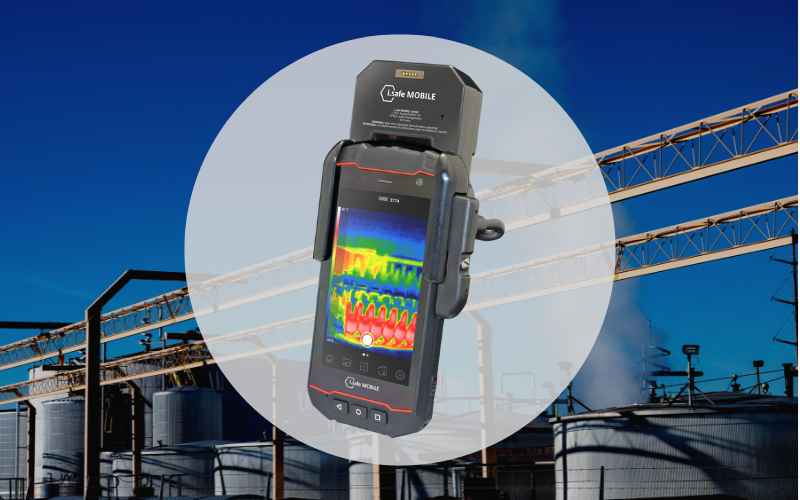Hazardous areas are found throughout many industrial and manufacturing environments, and could potentially be extremely dangerous if there is a gas or dust leak. When it comes to inspecting equipment in hazardous areas, thermal imaging cameras are the safe way to do so. Thermal imaging cameras let you see potential problems with equipment by detecting heat differences and letting you know where they are occurring. In hazardous areas, where other inspection methods may not be possible, this is an invaluable tool to industry. They detect heat sources from leaks and other problems before they become major concerns by providing real-time data on hotspots around your plant’s machinery or equipment.
The IS530.1 smartphone attachment, the IS-TCA.1 thermal camera, is one great option for using an infrared camera in hazardous areas. It has a wide range of features, including a sensitive and precise thermal imaging sensor, and a battery that can comfortably last a whole shift.
A hazardous area is an environment that can potentially be extremely dangerous if there is a gas or electric leak. Hazardous areas are found throughout many industrial and manufacturing environments, such as chemical plants, refineries, oil drilling platforms, and boiler rooms. These settings often include processes that involve large amounts of electricity or high temperatures.
The benefits of using a thermal imaging camera in hazardous areas include reducing the risk of injury while increasing productivity – Since you can see where the problem is located before making repairs, you won’t have to take unnecessary risks when working on machinery inside these types of locations
The most common example of such an area is a gas or electric leak; these types of leaks will often cause damage to surrounding equipment, but their detection can be difficult without the proper technology. Thermal imaging cameras allow you to detect these kinds of issues before they become costly problems for your business.
A thermal imaging camera uses infrared light to detect temperature differences. This method is non-contact, and therefore safer than other intrusive methods such as ultrasonic inspection or magnetic particle testing.
The IS530.1 also allows you to record video directly on the smartphone so you can share it with operational staff and add it to any reporting tools that are being used. The other clear advantage of using a smartphone with thermal imaging attachment is that the user has access to all the capabilities of a smartphone including communication services such as email or text messaging as well as being able to upload images directly to reporting systems.
Thermal imaging cameras are an affordable and effective way to inspect equipment in hazardous areas. They can help you find potential problems with equipment before they become a problem for your company or workplace, saving time and money in the long run. If you’re interested in finding out more about the IS530.1 smartphone and the IS-TC1A.1 thermal camera from i.safe MOBILE, check out our product pages or contact us today!

